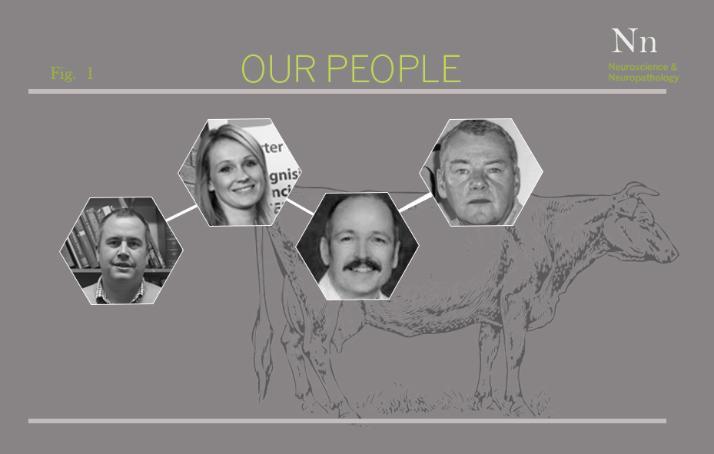Neuroscience & Neuropathology
To explore the mechanism and functions of neurons, neuronal circuits, myelination and hormone signals for the generation of complex behaviour and the impact of brain and spinal cord damage in domestic animals.
Neuroscience & Neuropathology Overview
Our research examines how the brain integrates sensory and vestigial signals and coordinates physiological, immunological, cognitive, behavioural responses and the mechanisms associated with neurodegenerative disorders. A primary focus is the bidirectional relationship between hypothalamic, thalamic, limbic, and cortical regions with endocrine systems.
The research tools used in our research range from genomic, epigenomic, molecular and cellular levels, through to circuit, system, whole animal levels. We use a range of in vitro, in vivo, and in silico approaches to uncover novel mechanism that support health and wellbeing in animals and as a model for humans.
We use a range of domestic, biomedical and non-traditional model organisms. These include mice (Mus musculus), Siberian hamster (Phodopus sungorus), Domestic sheep (Ovis aries), cattle (Bos taurus), pig (Sus scrofa) and dog (Canis familiaris).
Selected Publications
Gruenenfelder FI, McLaughlin M, Griffiths IR, Garbern J, Thomson G, Kuzman P, Barrie JA, McCulloch M, Penderis J, Stassart R, Nave KA, Edgar JM. 2020. Neural stem cells restore myelin in a demyelinating model of Pelizaeus-Merzbacher disease: Myelin rescue in PMD model. Brain (in press).
Qi Y, Montague P, Loney C, Campbell C, Shafie INF, Anderson TJ, McLaughlin M. 2019. In vitro evidence consistent with an interaction between wild-type and mutant SOD1 protein associated with canine degenerative myelopathy. Eur. J. Neurosci. 50, 3896-3905.
Onishi KG, Prendergast BJ, Stevenson TJ. 2019 Trait-specific effects of exogenous triiodothyronine on cytokine and behavioral responses to simulated systemic infection in male Siberian hamsters. Hormone and Behavior, 110:90-97.
Hough D, Robinson JE, Bellingham M, Fleming LM, McLaughlin Jama MK, Haraldsen IRH, Solbakk AK, Evans NP 2019 Peripubertal GnRH and testosterone co-treatment leads to increased familiarity preferences in male sheep. Psychoneuroendocrinology 108:70-77.
Hough D, Haraldson IH, Bellingham M, Robinson JE, McLaughlin M, Evans NP. 2017 A reduction in long-term spatial memory persists after discontinuation of peripubertal GnRH agonist treatment in sheep. Psychoneuroendocrinology. 77: 1–8.
Hough D, Haraldson IH, Bellingham M, Robinson JE, McLaughlin M, Evans NP. 2017 Spatial memory is impaired by peripubertal GnRH agonist treatment and testosterone replacement in sheep. Psychoneuroendocrinology. 75: 173–182.


